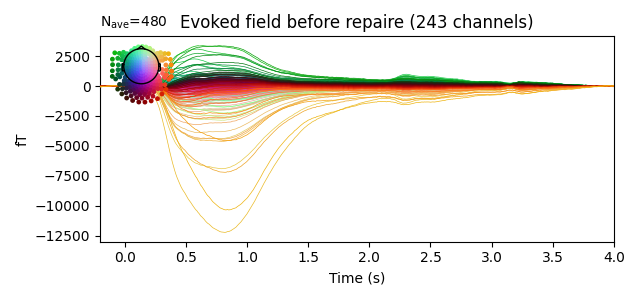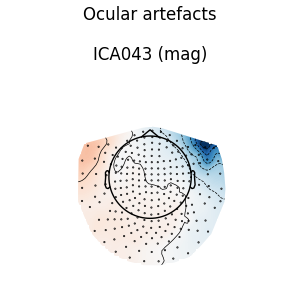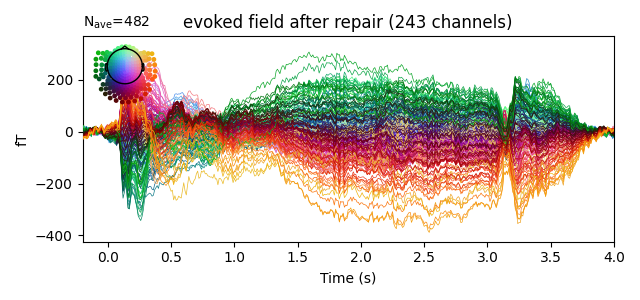3. Removing Muscle Artefacts
As stated above, analysis of our pilot data requires artefact removal. Muscles, just like neurons, use electrochemical signals to operate. Unfortunately for us, this tend to be much stronger than that of neurons. This means that without artefact repair our data will be overwhelmed by muscle artefacts, which isn’t what we want to analyse.
Luckily, artefacts can be removed with an algorithm called independent component analysis (ICA). This comes free with the package MNE-python (see this post for details). Below, we will look at some basics of ICA component removal. The codes used can be found here.
3.1. Evoked Field without Repair
Let’s look at the evoked field without the ICA repair.

The neural signal should not reach thousands of femto Tesla. This is clearly dominated by noise from the muscle.
3.2. ICA components
Let us now look at ICA components. As the name suggests, ICA components decompose the data into components that vary independently of each other. Some of these components will correspond to artefacts.
3.2.1. Automatic detection of ocular and cardiac artefacts
For ocular and cardiac artefacts there are MNE-python builtin functions for detecting them. I have also manually corrected them (see jupyter notebook for more detail).


Component No. 4 is distributed globally which is typical for cardiac artefact. Component No. 8 is a little strange. I’m not sure why it is frontally distributed.


The ocular components are, as expected, frontal.
3.2.2. Manual Detection of Muscular Artefacts
While EEG channels placed on the mouth can help detecting the artefacts, we still need to manually inspect in order to remove enough noise.
Manual inspection showed that there are in total 4 components which contribute significantly to noise, components No. 0, 1, 2, 3, 27.


These are all frontal, as expected.
Now, let’s see how much noise have been removed.

Hurray! Now the signal strength is below 400 fT. This is more reasonable compared to the original data.
